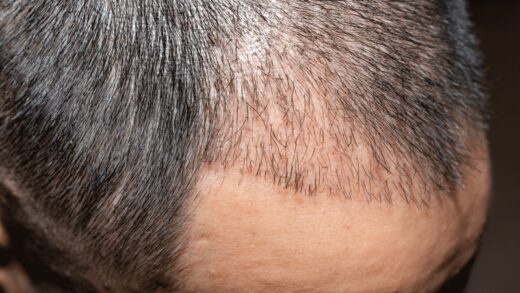Many unwanted complications and side effects of hair transplant may occur after the operation. For preventing them and make them minimal in well-programmed and well-planted patients. After hair transplantation, many patients experience pain, edema, hair loss in hair transplantation and donor area, persistence of crusting in the donor and hair transplant area for a long time, and diminished sensation within the donor and hair transplant region.
The surgical procedure may cause risk in hair transplantation , the inadequacy of the knowledge and technology used by the doctor performing the procedure, and the physiology of the patient. For this reason, in order to minimize the side effects of hair transplant that may arise from the patient, before hair transplantation, specialist should inform the patient about what to do before transplantation, scalp care and what to do after transplantation.
We can examine the complications that may occur in hair transplantation under 3 headings.
General Complications; Donor site complications; Recipient area (hair transplant area) complications
General Complications
- Side effects in anesthesia practice
- General surgical complications (which may occur in all surgical procedures)
- Bleeding
- tachycardia
- Syncope
- Pain
- Infection
- Itching
- Bleeding
- Edema
Donor site complications
- Donor site thinning, moth-eaten appearance
- Hypopigmentation, punctate scarring
- acute effluvium
- Embedded grafts
- High transection rate
- keloid, hypertrophic scar
- epithelial cyst
- Necrosis
- numbness and pain
- Graft removal outside the safe zone
Recipient area (hair transplant area) complications
- Sparse front line
- Unnatural and general sparse appearance
- Edema
- Necrosis
- Pustule and folliculitis
- False front line design
One of the Main Side Effects of Hair Transplant: Bleeding

After hair transplantation, there may be minimal bleeding from the donor and hair transplantation area. That is why aspirin, NSAI, vitamin E, alcohol, anabolic steroids and other blood thinners used by the patient before transplantation may increase the risk of bleeding. Bleeding in an around the donor area is more frequent in the FUT method.
Edema
Edema may develop in the hair transplantation and donor area and on the forehead, which may last for 3-4 days. Also forehead edema causes to form an other edema around the eye with gravity, and this edema can cause the eye to close for 1-2 days. Although there is no pain in this side effect, it is not a serious side effect, and patients affects by it in ver low levels. Besides it goes away on its own in 3-4 days.
Temple edema is additionally caused by the volume of anesthetic drugs connected to the transplantation zone, and their effect on the circulation within the brow due to excessive hair transplantation. Keeping the head up 45 degrees whereas lying down, moo salt slim down and cold compress applications will be viable in edema.
It is additionally an viable strategy to knead the brow upwards from the eyebrows and from the center to the edges of the brow. In persistent and prolonged edema, experts may give systemic corticosteroids
Sensory Changes As the Side Effects Of Hair Transplant
As it observed in FUT hair transplantation. During the cutting of the nerves while the incision in the donor area and their healing stages, there is an increase in sensation and regional hypersensitivity on the scalp in the donor area. In some cases, loss of sensation in the donor land may be experienced. These improve over time.
Erythema – Redness
Temporary erythema occurs in the donor and hair transplant area.
Infection
Since hair transplantation occurs under sterile conditions, the risk of infection is very low. Local infections mostly exist in donor land and hair transplantation areas. Crusting after hair transplantation is a risk for the development of infection. After suturing, this crusting should be removed from the area with special shampooing. Anti-microbial creams ought to be utilized 3-4 times a day. Systemic anti-microbials ought to be begun when the improvement of disease is taken note. Contaminations that begin from the hair follicles frequently create within the transplantation region.
For getting more information, please visit our website and fill out the contact form to reach us.
Frequently Asked Questions
What are the disadvantages of hair transplant?
Bleeding, infections, thinning of hair girth, itching, scarring , cysts, hiccups ,pain ,swelling, numbness are then disadvantages of hair transplant.
Are hair transplants safe?
When it is performed by a good experienced medical staff, it is a perfectly safe procedure.
Can you lose hair again after transplant?
Loss of hair grafts following a hair transplant can occur anywhere from one to five weeks after the procedure. Patients are frequently concerned about the continuous loss of hair, but they should rest assured that new hairs will ultimately grow back a few months following the surgery.